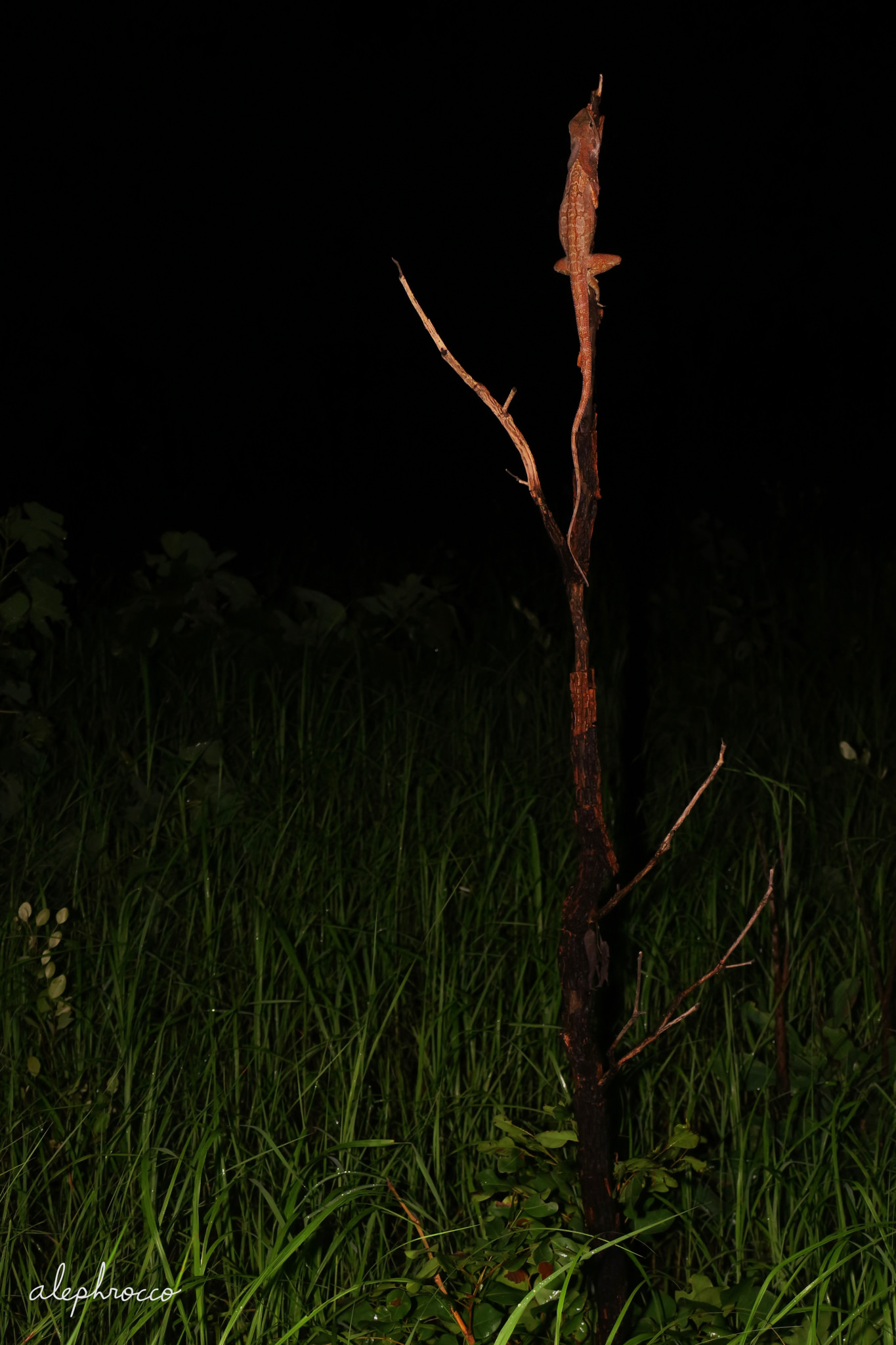
Frillies rely heavily on crypsis and their deimatic display to avoid getting taken away by avian predators. However, at night they are rather defenseless. I never observed a frilly flee during my nocturnal searches, except when I came in direct contact with the lizard. Only once a lizard shuffled three centimeters around the trunk in response to my disturbance. This behavior surprised me since they awaken easily and stare blankly at my head torch. Certainly in other agamids (e.g. water dragons, Intellagama lesueurii; Gilbert’s dragons, Lophognathus gilberti) you can easily elicit a flee response. During the day I would never expect this sort of reaction, and when spotted the lizards would constantly rotate around the trunks to avoid detection.
The frillies all chose sleeping positions on completely vertical thin bare trunks, possibly reducing the predation pressure from snakes that are active during the night. Though carpet pythons (Morelia spilota variegata) and black-headed pythons (Aspidites melanocephalus) are great climbers, scaling 3-5 meters up a vertical eucalypt is likely a more difficult maneuver. I was really surprised with the consistency of their sleeping positions. Once I found a large male dragon sleeping at a 45 degree angle, but the male was so large that sleeping vertically might have been uncomfortable given his body weight.
Two shots below in situ [1]; see my previous post for her deimatic display. Out of all the frillies I encountered this one chose the lowest sleeping perch and furthest away from the others.


